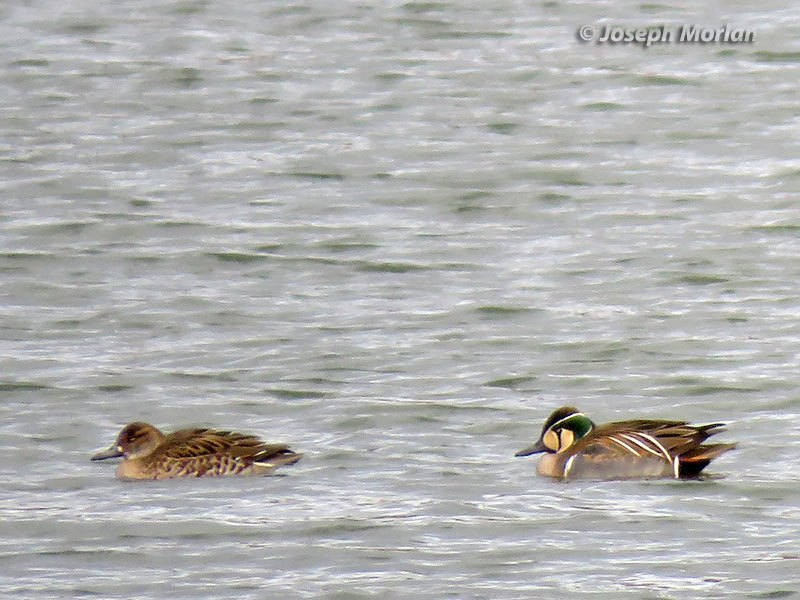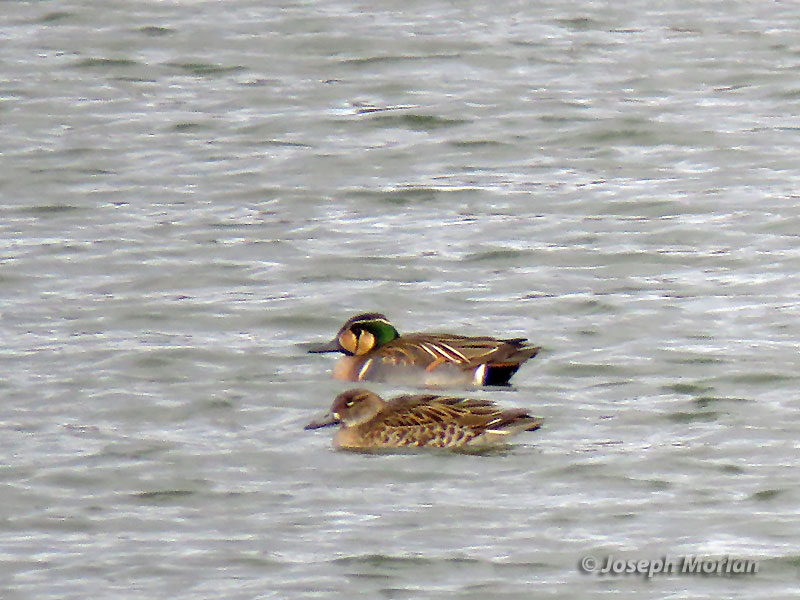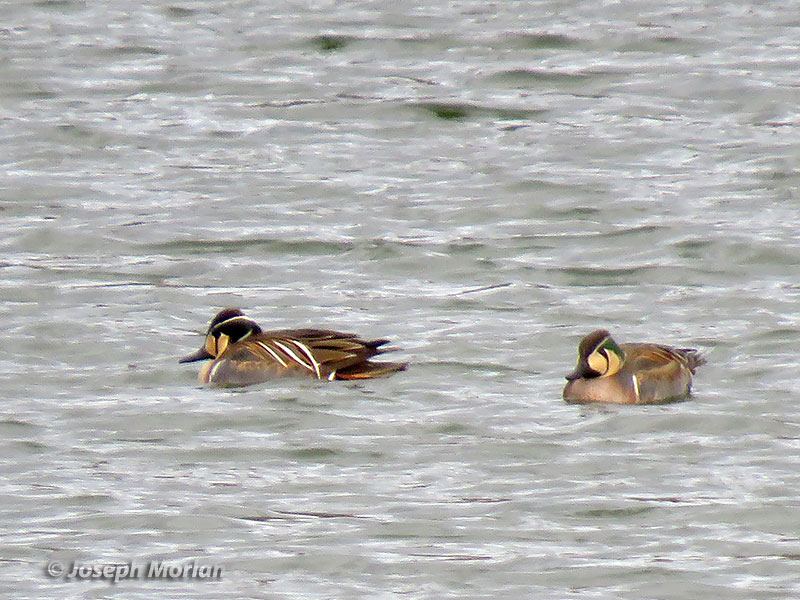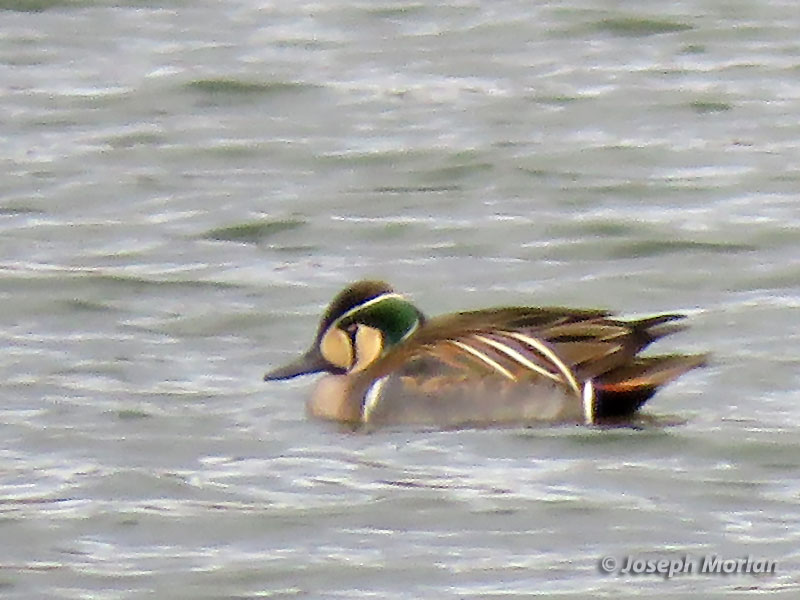



Female left, male on right.These are adults, the males of which show complete white shoulder stripes and have a white, not buffy supercilium. Note also the white trim along the lower border of the green face patch typical of fully adult males. In this species, some juvenal plumage feathers are known to persist until the following summer (Madge & Burn 1988), while adults usually attain full plumage by late fall (Palmer 1976). Note the white lore spot on the female.
Formerly considered "vulnerable" but now this species is classified as "least concern" by IUCN. Because of over-hunting and pesticides, the Baikal Teal underwent a serious population decline in past decades. By the 1980's their total world population had plummeted to an estimate of only 20,000 birds. However, recent conservation efforts have been extremely successful and upwards of 400,000 Baikal Teal now winter in Korea alone. More details of this comeback can be found at the BirdsKorea web site.
A genetic study by Johnson and Sorenson indicated that Baikal Teal is not closely related to any other Anas species. This finding was confirmed by Gonzalez et al (2009) who recommended placing Baikal Teal in its own monotypic genus, a proposal adopted in 2017 in the 58th supplement to the AOU checklist. King (1999) noted that Anas hybrids often show Baikal-like facial patterns, and speculated that this may be a reappearance of characters that are ancestral to the whole dabbling duck tribe. Canon PowerShot SX60.
References:
BirdLife International 2016. Sibirionetta formosa. The IUCN Red List of Threatened Species 2016: e.T22680317A92855272. http://dx.doi.org/10.2305/IUCN.UK.2016-3.RLTS.T22680317A92855272.en. Downloaded on 22 April 2019.
Carboneras, C. & Kirwan, G.M. (2019). Baikal Teal (Sibirionetta formosa). In: del Hoyo, J., Elliott, A., Sargatal, J., Christie, D.A. & de Juana, E. (eds.). Handbook of the Birds of the World Alive. Lynx Edicions, Barcelona. (retrieved from https://www.hbw.com/node/52867 on 22 April 2019).
Chesser, R.T., Burns, K.J., Cicero,C., Dunn, J.L., Kratter, A.W., Lovette, I.J., Rasmussen, P.C., Remsen, Jr., J.V., Rising, J.D., Stotz, D.F., Winker, K. (2017) Fifty-eighth supplement to the American Ornithological Society's Check-list of North American Birds. The Auk: Ornithological Advances 134(3):751–773, https://doi.org/10.1642/AUK-17-72.1
Gonzalez, J. , H. Düttmann , and M. Wink. 2009. Phylogenetic relationships based on two mitochondrial genes and hybridization patterns in Anatidae. Journal of Zoology 279: 310–318.
Johnson K.P. & M.D. Sorenson (1999). Phylogeny and biogeography of dabbling ducks (genus Anas): a comparison of molecular and morphological evidence. Auk 116: 792- 805.
King, J.R. (1999) OrnithoNews: Taxonomy of Anas ducks: Green-winged Teal is a separate species. Birding World 12(6):344.
Madge, S. & H. Burn (1988) Waterfowl: An identification guide to the ducks geese and swans of the world. Houghton Mifflin
Palmer, R.S. (1976) Handbook of North American Birds Vol. 2: Waterfowl (Part 1). Yale Univ. Press.